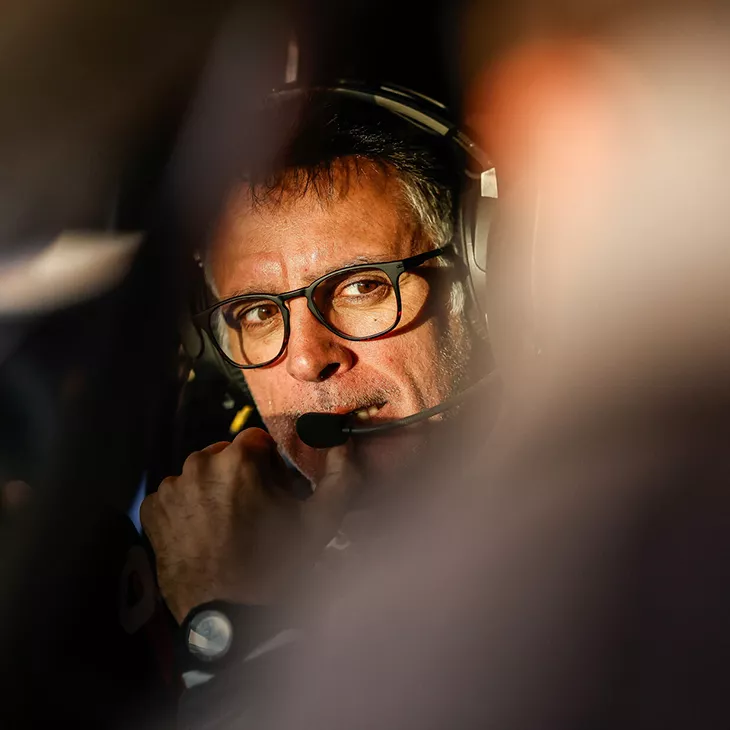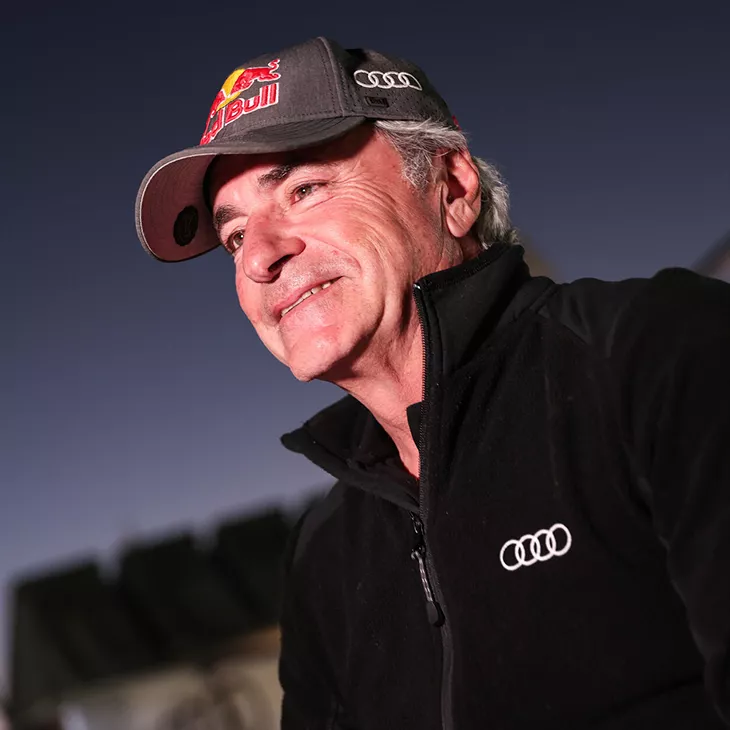Facts and figures on Audi’s Dakar victory
• Carlos Sainz and Lucas Cruz: involuntary cold showers, avoiding mistakes, hard landings and the generous gesture of a competitor
• 12.28 kilometers of uninterrupted top speed
• Clever energy management: one seventh comes from recovery
Audi made global headlines with its first Dakar victory. The analyses of Team Audi Sport, together with background stories from the bivouac, reveal many an insight worth reading.
Audi celebrated its first victory at the Dakar Rally on January 19, 2024. Since 1980, Audi has achieved successes such as victories or championship titles in the World Rally Championship, the Pikes Peak Hill Climb, the Le Mans 24 Hours, the American Le Mans Series, the European Le Mans Series and the FIA World Endurance Championship WEC, in touring car categories such as the DTM, in super touring cars and in the Trans-Am, in Formula E as well as in the GT2, GT3, GT4 and TCR customer racing categories. With the triumph in the desert, one of the few remaining blank spots on the company’s global motorsport success map disappeared.
In contrast, vehicle engineer Joan Navarro has been gaining experience in desert rallies since 2013, when he joined Sven Quandt’s team. As a race engineer, he led Nani Roma to victory in the Dakar Rally in 2014, Carlos Sainz for the first time in 2020 and Stéphane Peterhansel a year later. His pride in his fourth victory as Carlos Sainz’s engineer is immense: Joan Navarro has not yet taken off his wristband, which served as access authorization for all team members during the rally, even two weeks after crossing the finish line.
The loads to which the Audi RS Q e-tron was subjected were extreme at times during a particularly challenging edition of the Dakar Rally. The hardest landing after a jump briefly generated a peak acceleration of 16 g in a vertical direction. It occurred on the third stage. By comparison, a passenger airplane is flown in such a way that the occupants are exposed to accelerations of no more than 1.5 g. Astronauts experience accelerations of 3 to 4 g during take-off, and up to 6 g can occur briefly during roller coaster rides.
On the fourth leg on January 9, the official route description from the organizer contained the note “very fast track” for the passage between the 66th and 95th kilometer of the route. The Audi engineers read out the data in the evening. They showed that the victorious Audi RS Q e-tron reached the permitted maximum speed of 170 km/h for 260 consecutive seconds (i.e. 4 minutes and 20 seconds). A remarkable value on pure off-road tracks. Such values are unthinkable on a classic racing circuit. Driving at this speed alone would require a straight of 12.28 kilometers, the run-up to this speed not included.
The sixth stage in the “Empty Quarter” was in stark contrast to that. The mountain-like dunes dramatically lowered the average speed. On around 400 kilometers of dune chains, Carlos Sainz and Lucas Cruz only achieved an average speed of around 40 to 50 kilometers per hour. What sounds like a comfortable inner-city pace is in fact torture for the highly stressed electric drive system, the two gearboxes, the four drive shafts and the cooling systems. Energy consumption also skyrocketed on this terrain.
One of the secrets of success on the way to victory was the ingenious strategy of the team and driver. Head of Audi Motorsport Rolf Michl and Sven Quandt, Team Principal of QMS, held regular night-time meetings on race strategy after detailed stage analyses, which paid off in full. The decision to voluntarily lose five minutes on the fifth stage in order to avoid having to open the challenging sixth stage was a bold one. In comparison with all the competitors, however, it became clear in retrospect that the analysis was absolutely spot-on. Audi occupied first and second position after the sixth leg and during the rest day and Carlos Sainz/Lucas Cruz never relinquished the lead after that.
The electric drive of the Audi RS Q e-tron with a high-voltage battery and a reFuel-powered energy converter is extremely efficient. The winner recovered a considerable proportion of the energy required in an intelligent way. During braking, the motor-generator units (MGU) converted kinetic energy into electrical energy. This recuperation covered an average of 14 percent of the daily energy requirement during the rally. A side effect: compared to conventional rally cars, the wear of brake disks was reduced. The mechanics only changed the front pair once and the rear pair twice.
“It was okay once, but I didn’t need it a second time,” commented Carlos Sainz honestly. He then benefited from a generous gesture among true sportsmen: Toyota driver Yazeed Al-Rajhi let the Spaniard use his luxurious motorhome for the remaining nights. The driver from Saudi Arabia had retired on the sixth stage after a roll, allowing Sainz to take the lead.
While the regular rally days meant a lot of work for the entire team, there were also two marathon stages with more unusual conditions. In the first of these two special stages, only very limited servicing was permitted, and in the second, no work at all was allowed on the racing cars. As expected, the employees were given time off on these days. Team Audi Sport knew how to pass the time in a sporty way: The team had brought along a football table from Germany, which was very popular.
Technical Director Dr. Leonardo Pascali was doubly relieved and equally proud on January 19. During the rally, the Italian not only focussed on the team but also on the progress of his ambitious son. On the same day that Team Audi Sport won the Dakar Rally, Antonio Pascali won the “Youth Men” category for under 19-year-olds in the ILCA 6 Youth and Men’s World Championships in sailing in Mar del Plata, Argentina.






